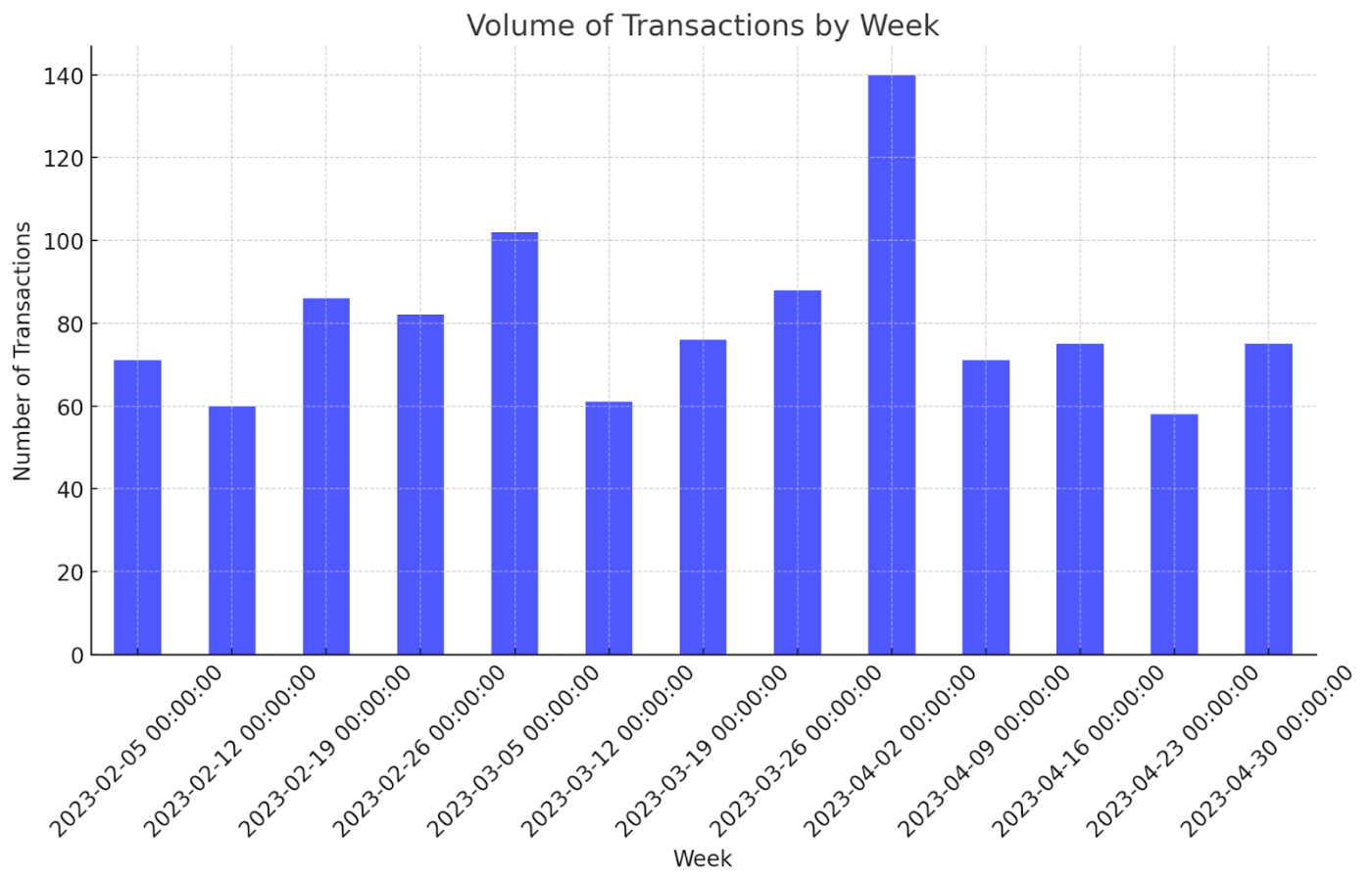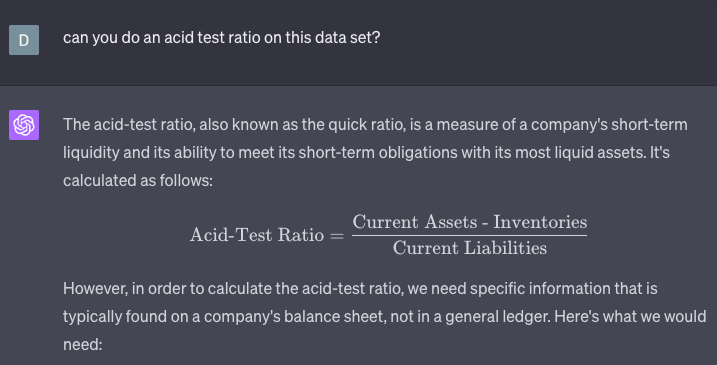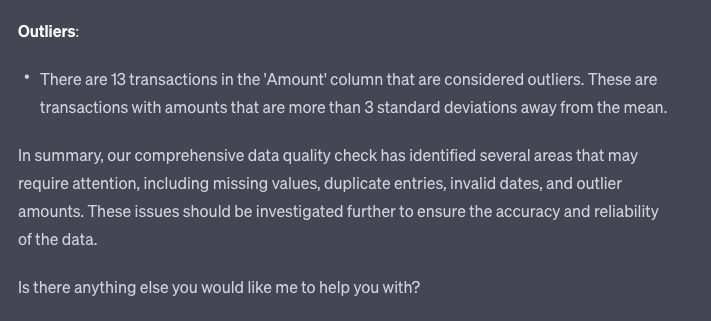
Sponsored By: Uptrends.ai
This essay is brought to you by Uptrends.ai, it's like Google Trends and Wall Street merged into one powerful tool. Get your first-month subscription 100% free by entering the code EVERY when you sign-up and jumpstart your financial journey.
Currently, our platform is exclusive to desktop users. So, pull up your chair, log in from your desktop and start leveraging the power of Uptrends.ai to stay a step ahead in the market.
Editor’s note: This week OpenAI is making Code Interpreter generally available to ChatGPT Plus users. Evan (who is on vacation) got access to the tool a few weeks ago, so we’re re-running his recent piece about experimenting with it for Every’s accounting operations. Are you using Code Interpreter? Let us know how in the comments.
Like most startups, we’ve been looking at how to reduce our expenses at Every with AI. One area I’ve been experimenting with is just how much accounting minutiae I can automate. Recently I had a breakthrough thanks to a ChatGPT plug-in called Code Interpreter (it’s not widely available, so don’t be sad if you don’t have it on your account yet). A user uploads a file, and ChatGPT will write in Python code to understand and analyze the data in that file.
It sounds simple, but that is basically what every finance job on the planet does. You take a standard form, like an income statement or a general ledger; populate it with data; and run analysis on top of that data. So theoretically, Code Interpreter can do the majority of finance work. What does it mean when you can do sophisticated analysis for <$0.10 a question? What does it mean when you can use Code Interpreter to answer every question that involves spreadsheets?
It’s easy for your eyes to glaze over with statements like that. Between AI Twitter threads, theatrically bombastic headlines, and the beating drums of corporate PR, the temptation is to dismiss AI stuff as hyperbole. Honestly, that’s where I’m at. Most of the AI claims I see online I dismiss on principle.
With that perspective in mind, please take me seriously when I say this: I’ve glimpsed the future, and it is weird. Code Interpreter has a chance to remake knowledge work as we know it. To arrive at that conclusion, I started somewhere boring—accounting.
Picture this - Google Trends and Wall Street merged into one powerful tool. Welcome to Uptrends.ai - your personal stock market news analyst. A first-of-its-kind platform designed to simplify investing for everyone, where chatter turns into valuable trading insights, highlighting trends and events that count.
With Uptrends.ai, trading the news has never been simpler. Better yet, get your first-month subscription 100% free by entering the code EVERY at checkout.
Like a Bloomberg Terminal, our platform is only for desktop users. So, pull up your chair, log in from your desktop, and start leveraging the power of Uptrends.ai to stay a step ahead in the market.
Experimenting with the general ledger
AI has been used by accountants for a long time; it just depends on what techniques you give the moniker of artificial intelligence. The big accounting firms will sometimes use machine learning models to classify risk. However, because large language models (LLMs) like GPT-4 and Claude are still relatively new, these techniques haven’t been widely integrated into auditors’ or accountants’ workflows.
When I say, “I want to replace my accountant with a Terminator robot,” I’m looking for a way to use LLMs to automate work that an accountant would typically do.
My journey to nerdy Skynet started simply.
I uploaded Every’s general ledger—a spreadsheet that lists all of the debits and credits for a period—into ChatGPT. My goal was to run a battery of tests that an auditing firm would do: tasks like looking for strange transactions, checking on the health of the business—stuff like that. While the tests are rather abstract, they’re small pieces of analysis that build into a cohesive understanding of the health of a business.
Once the CSV file is uploaded, the system goes to work. It realizes this CSV is a general ledger and writes five blocks of code to make it readable for itself.
Note: I’ve done some creative image sizing because I don’t want to expose our bank account info. Images will all be supplemental and are not necessary for reading this piece.
It classifies the data and is ready for me to ask it questions in ~10 seconds. Compare that with the usual 24-hour turnaround time on emails with an accountant.
From there, I run the AI through some of the small tests an auditor would do. First, I ask it to create a graph showing the volume of transactions by week. An auditor would do this analysis as a simplistic risk test; if there were a week with unusually high volume, they would want to examine that further.
In ~10 seconds, faster than a finance professional could do it with a pivot table and charting tool, I have a graph.
Cool, but not amazing. Let’s push it further.
Next, I decided to test its knowledge. The role of an auditor/accountant is to figure out how safe a business is. To do so, they’ll often use assessments like the acid-test ratio, which measures how quickly a company could meet unexpected bills. The key is that you cannot measure this ratio with a general ledger. It requires a balance sheet, as a ledger doesn’t tell you about the asset liquidity necessary for paying bills. Thankfully, the AI passes the pop quiz with flying colors.
It recognizes that it can’t perform this test on the general ledger and needs a balance sheet. If we were to actually perform this test, I’d prefer a slightly different version of the formula, but still, it gets the important things right. (As a note to our investors, don’t panic—I just ran this formula myself, and we aren’t going bankrupt quite yet.)
Next, I’ll try something the AI can do with a ledger—a data quality check. In trying to speak to it the same way I would to a normal human, I ask, “Yo, is the data good?” It responds with five different ways of testing the data. The first four I can’t show for privacy reasons. However, in each case, the analysis was performed correctly. For those keeping track, we are at six tasks an auditor would do automated with AI, but it wasn’t until the final data test that I got the first glaring error in my experiment. It found 13 outliers “that are more than 3 standard deviations away from the mean.”
I asked it to list the 13 reasons. None of them were actually outliers—they were all column or row sums that the system thought was an expense. In short, the AI was foiled by formatting.
The system messed up, not because of the data, but because it got confused by how the data was labeled. This is the world’s smartest and dumbest intern simultaneously. You have to keep an eye on it. When we make spreadsheets, we often do things to make them more human-readable, actions like removing gridlines or bolding important numbers. For this to work in a product, the files need to be more machine-readable. What is remarkable is how far the system can get even though this data is clearly not meant for its eyes.
I let the AI know it made a mistake, it apologized, and we fixed the issue together by editing the sheet directly and reuploading it.
Then I got really funky with it. I uploaded our P&L in the same chat and asked ChatGPT to perform reconciliation by comparing transaction-level data with aggregated performance on a monthly level.
Things fall apart
The good news: the AI can simultaneously run analysis on multiple files. It was able to successfully compare monthly expenses in the ledger to the P&L. The bad news: the result was wrong.
Once again, I was caught by formatting errors. The AI struggled to get around formatting issues with just one spreadsheet. If you add two spreadsheets with wildly diverse formatting styles, the system goes kablooey. I tried asking it to reformat the files into something it could read, but the errors started to compound on themselves. Based on my discussion with hackers on the topic, I think it has to do with the titles of rows versus the titles of columns, but this is an area for further experimentation. Code Interpreter can do single document analysis easily but starts to struggle the more files you give it to examine.
I still stand by my claim from the intro: I think that AI can replace some portion of knowledge workers. These are all easily fixable problems. Rework the general ledger and P&L to have identical formatting, load them into a database with the Stripe API, then reap the benefits of a fully automated accountant.
You could then use Code Interpreter to do financial analysis on top of all of this—for measurements like discounted cash flow—and now you have an automated finance department. It won’t do all the work, but it’ll get you 90% of the way there. And the 10% remaining labor looks a lot more like the job of a data engineer than a financial analyst.
Frankly, this is a $50B opportunity. A company with this product would have a legitimate shot at becoming the dominant tool for accounting and finance. It could take down QuickBooks or Oracle. Someone should be building this—the tech is right there for the taking.
The key question will be how OpenAI exposes Code Interpreter. If it is simply a plug-in on ChatGPT, startups shouldn’t bother. But if the company exposes it through an API, there is a real chance of disruption. There will be a ton of work a startup could do around piping in sales data and formatting. Adding in features like multiplayer or single sign-on would be enough to justify a startup’s existence. As a person who does not hate their life, I will not be selling B2B software, so feel free to use this idea (and send me an adviser check, please).
This is a cool experiment—but I think there are bigger takeaways.
Maybe the future is weirder than you think
One of the great challenges of building in AI is understanding where profit pools accrue.
Until this experiment, I was in the camp that the value will mostly go to the incumbents who add AI capabilities to existing workflows or proprietary datasets. This, so far, has mostly turned out to be true. Microsoft is the clear leader in AI at scale, and the company shows no sign of slowing down.
However, this exercise with the general ledger is about more than accounting. It gave me a hint of how AI will be upending the entire world of productivity. There is a chance to so radically redefine workflows that existing companies won’t be able to transition to this new future. Startups have a real shot at going after Goliath.
I am a moron. I am not technical, and I sling essays for a living. Despite that, I was able to automate a significant portion of the labor our auditors do. What happens when a legitimately talented team productizes this?
All productivity work is taking data inputs and transforming them into outputs. Code Interpreter is an improvement over previous AI systems because it goes from prose to raw data as an input. The tool is an abstraction layer over thinking itself. It is a reasoning thing, a thinking thing—not a finance tool. OpenAI doesn’t even mention the finance use case in the launch announcement! There is so much opportunity to remake what work we do. Code Interpreter means that you don’t even need access to a fancy API or database. If OpenAI decides to build for it, all we will need is a command bar and a file.
I’ve heard some version of this idea, of AI remaking labor, over and over during the past year. But I saw it happen for the first time with this tool. It isn’t without flaws or problems, but it is coming. The exciting, scary, horrifying, invigorating, wonderful, awful thing is that this is only with an alpha product less than six months old. What about the next edition of models? Or what will other companies release?
This is not a far-off question. This is an 18-months-away question.
One of the most under-discussed news articles of the past six months was OpenAI’s biggest rival Anthropic’s leaked pitch deck. The reported version said that the company wanted a billion dollars to build “Claude-Next,” which would be 10x more powerful than GPT-4. I have had confirmation from several sources that other versions of that deck claimed a 50x improvement over GPT-4.
Sit with that idea. Let it settle in and germinate. What does a system that’s 50x more intelligent than Code Interpreter mean for knowledge labor? I’ve heard rumors of similar scaling capabilities being discussed at OpenAI.
Who knows if the company can deliver, but can you imagine if we get a 50x better model in two years? Yes, these are pitch deck claims, which are wholly unreliable, but what happens if they’re right? Even a deflated 10x better model makes for an unimaginable world.
It would mean a total reinvention of knowledge work. It would mean that startups have a chance to take down the giants. As Anthropic said in its pitch deck, “These models could begin to automate large portions of the economy.”
This experiment gave me a glimpse of that future. I hope you’re ready.
The Only Subscription
You Need to
Stay at the
Edge of AI
The essential toolkit for those shaping the future
"This might be the best value you
can get from an AI subscription."
- Jay S.
Join 100,000+ leaders, builders, and innovators

Email address
Already have an account? Sign in
What is included in a subscription?
Daily insights from AI pioneers + early access to powerful AI tools
















Comments
Don't have an account? Sign up!